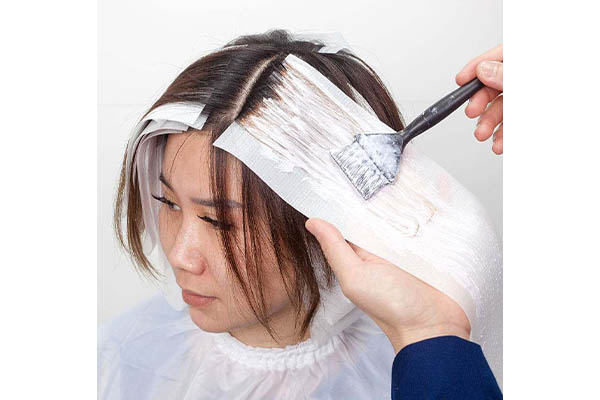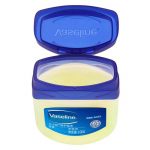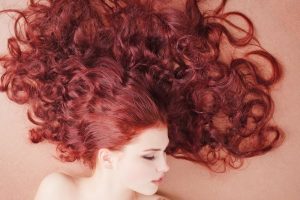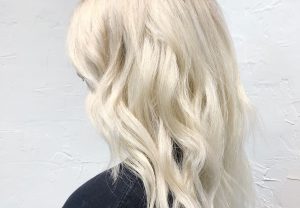
How Often Can You Bleach Your Hair? The Tutorial Guide
You should not bleach your hair more than once every 8 to 10 weeks, as bleaching will cause chemical damage to the hair. It is important to understand that hair bleaching is a very demanding process, and your hair must endure.
How often can you bleach your hair without causing damage? Discover more in our quick guide, which also includes information on the bleaching procedure, how it affects your hair, and how long you must wait before bleaching again.
Table of Contents
How Often Can You Bleach Your Hair?
Because hair bleaching can cause chemical damage to hair, you shouldn’t bleach your hair more than once every 8 to 10 weeks. It’s critical to realize how damaging the process of hair bleaching is for your hair.
Breakage, split ends, and possibly hair loss will result from using hair bleach more frequently. Frequently, these problems are present in previously bleached hair (i.e., processed hair) since the hair-bleaching agents contain harsh chemicals.
Our recommendation: Just enough bleaching of your hair will do. Less frequent bleach treatments are even better, though we don’t advise bleaching your hair more frequently than once every 8 to 10 weeks.
For regular dye maintenance, the American Academy of Dermatologists also recommends waiting 8 to 10 weeks in between dye jobs. They also advise against applying more than one treatment to your hair at once in order to prevent breakage (i.e., refrain from getting perms and bleaching your hair on the same day).
To protect damaged hair and prevent further damage, stop bleaching treatments for a few months if your hair has already been damaged by the use of bleaching agents.
However, given that each person’s circumstances (such as, hair type, regimen, etc.). You can use the following guidelines to determine whether your hair is ready for another bleaching procedure.
Why Bleaching Your Hair Again Too Soon is Dangerous?
Too soon after the last bleaching, your hair and scalp are in grave danger. The bleaching procedure and its operation have been covered. If you put your locks through this damaging, harsh process again without a sufficient “recovery period,” there’s a good chance your hair will be damaged beyond repair.
A second round of bleaching will exacerbate any harm from the first. You can therefore bet that Round 2 will leave your hair incredibly brittle, bone-dry, and prone to breaking or falling out if the first round leaves it slightly dry, frizzy, and fragile.
We discussed how bleach and developer combine to penetrate inside hair strands and lighten your hair color above.
The hydrogen peroxide in the developer opens the cuticle layer of the hair during this process, allowing the bleach molecules to enter through the outermost layer of the hair.
Your hair is extremely vulnerable to damage and moisture loss during this stage of the procedure because the cuticle scales aren’t intended to be pried open like this. But that’s not all!
Your hair doesn’t magically return to its pre-bleach state after you’ve finished bleaching and rinsed the mixture out. The cuticle scales will remain partially lifted, and it takes a few weeks for them to heal.
If you bleach again too soon, you run the risk of completely removing those cuticle cells, exposing the delicate inner structures of your hair.
Split ends are a common problem, so you are likely familiar with the appearance and feel of hair that has lost its cuticle layer. Split ends happen when the cuticle layer at the tips of the strands is worn away. So picture what would happen if the cuticle layer on your entire head were chemically broken! Repeated bleaching can result in that.
After being exposed to corrosive chemicals back-to-back, your hair’s inner structures, the cortex and medulla, will also become weak and brittle. This thin, brittle hair will easily fall out at the root and break off.
This is why it is 100% essential to give your hair a couple of weeks “off” in between bleaching sessions. It takes time for your hair to heal.

How the Bleaching Process Works?
When you use bleach to lighten your hair, the chemicals will combine to penetrate the hair shaft and oxidize the natural melanin pigments in your hair. Your hair’s natural pigments become lighter and lighter as the bleach oxidizes them, eventually reaching a nearly colorless, pale yellow tone.
But bleach powder alone won’t make your hair lighter. It has to be mixed with a developer to give you the lighter hair color you want.
One of the main ingredients in most developers, hydrogen peroxide, literally pry open the cuticle scales or plates that make up your hair’s outer layer. The bleach can enter the hair shaft after those tiny scales have been removed and begin oxidizing the melanin pigments in your strands.
It needs to sit on your hair for a while to process after you apply the bleach and developer mixture to it. For bleach to effectively lighten your hair color, it needs both time and heat. Most of the time, you’ll leave the bleach mixture on your hair for anywhere from 10-30 minutes.
Use a shower cap at home to retain body heat and quicken processing. To hasten the process of drying your hair even more in a salon, your stylist will probably place you under a dryer.
A lot can go wrong during the bleaching process, as you’re probably thinking (or have already discovered).
- If you don’t evenly apply the mixture or fail to fully saturate the hair with it, the results could look spotty, patchy, or Bleach can only lighten hairit is directly applied to, so missing spots during application gives you patchy results. Too-thinly applied bleach quickly dries out. The bleach mixture stops working and won’t completely lighten your hair if it is allowed to dry on your hair.
- Your hair will be over-processed and clearly damaged if the bleach mixture is left on for an extended period of time.You may notice a gummy or mushy texture, sudden breakage and hair loss, or even what stylists refer to as a “chemical haircut.” When this happens, the protein bonds in your hair are irreparably damaged, and the hair wherever the bleach was applied just snaps off.
- You risk under-processing your hair and not getting the desired level of lightness if you don’t leave the bleach mixture on long enough. The result is usually warm, brassy hairwith red, orange, or yellow undertones peeking through. If you only let the bleach sit for a short while, you might not see any color lift at all.
And if you bleach your hair again right away to try to correct any of these errors, you’ll only make the issue worse. Much worse.
The highlights or wet balayage are only a couple of the new hair colors to experiment with. If you want to try any, the best option is to bleach wet hair. Can you bleach wet hair? Does bleaching wet hair produce the intended effects, though?
How Often Can You Bleach Your Hair All-Over?
Imagine that after bleaching your hair, the outcome wasn’t quite what you had hoped. You notice you’ve missed a few spots, didn’t get the lift you wanted, or got super-warm tones (like red, orange, or yellow) showing through.
To get the results you want (or can at least live with), you decide you’ll need to use bleach again. However, the damage that will result from immediately bleaching again is a problem. How often is it safe to bleach your hair completely?
In about two weeks, you should be able to bleach your hair again without risk. Even though two weeks isn’t much time, it does give your strands some time to recover in between intense bleaching sessions.
Consequently, your cuticle layer has more time to unwind and lay flat, better safeguarding the inner workings of your hair strands. Your hair will be more effectively moisturized, less porous, and less vulnerable to harm from the second bleaching if the cuticle layer is intact.
It’s important to note that 2 weeks is the minimum amount of time you should wait before bleaching your entire head again. Your hair will look better the longer you can wait.
Therefore, you might as well wait another week or two before bleaching again if you make it through the first two weeks and have come to like your color or discover that braids, hats, or updo styles sufficiently conceal the splotchy color. The health of your hair will be worth any additional recovery time.
Can you bleach hair twice in one day? No, you cannot bleach your hair twice in one day. Avoid tempting fate here if you don’t want to end up with the kind of hair that will make you go to the salon wearing a ski cap. Additionally, hiring a colorist to work their magic to undo the harm done would cost you a pretty penny.
How Often Can You Bleach Your Roots?
How often should I bleach my roots for touch-ups if I have fully bleached my hair or have noticeable highlights? The good news is that you should be able to bleach your roots as soon as they begin to show – around 4 to 6 weeks.
You might not require root touch-ups that soon, depending on how quickly your hair grows. According to some women, root touch-ups are required every 6 to 8 weeks.
Bleaching just your roots won’t harm your hair as much as bleaching your entire head. When you do a bleach root touch-up, you’re only applying bleach to the newly grown virgin hair that hasn’t yet been chemically processed.
So when you bleach these new roots, you’re bleaching brand-new, undamaged, and (hopefully) healthy hair. This means that you can bleach your roots as soon as they start to look unattractive without endangering your hair further.
Consider switching to a shadow root/balayage style if you’re tired of having your roots touched up every 4 to 8 weeks. This enables you to softly blend the lighter, hand-painted highlights that begin around the mid-shaft into your roots while leaving your roots unbleached.
What Can I Do If I’ve Already Damaged My Hair With Bleaching?
The first step is to look for a high-quality conditioning treatment that will help nourish and strengthen your hair.
Additionally, you might try cutting back on your washing and styling in the days after bleaching. This will decrease the possibility of further irritation or damage while also giving your hair some time to heal.
To keep your hair healthy and less prone to split ends and breakage, make sure you get regular trims.
Finally, think about switching to bleach products that are kinder, less harsh, and won’t cause as much damage to your hair.
You’ll be back on track quickly with proper maintenance and regular trimmings.
Learn more about whether you can perm bleached hair or not.
Is a Bleach Bath More Gentle on Your Hair?
Absolutely, a bleach bath is kinder to your hair than regular bleach.
Pure bleaching powder can be quite harsh on hair, robbing it of its natural oils and leaving it feeling dry and brittle.
In contrast, a bleach bath recipe applies the bleach to the hair more gently and with a lower concentration.
The low-pH formula removes unwanted dirt and grime while also protecting the cuticles from additional chemical exposure, which helps to prevent damage.
Therefore, a bleach bath is undoubtedly the way to go if you’re looking for a quick way to achieve that ideal summertime platinum blonde look without harming your hair.
Can You Bleach Hair Again the Next Day?
There is no clear-cut answer to this query because it is dependent on a variety of elements, such as the kind of bleach used and the state of your hair.
Some people think that bleaching your hair more than once a day can harm it and make it brittle or more prone to breakage.
Others contend that daily hair bleaching is safe as long as you use a gentle product and care for your hair properly afterwards.
In general, it’s best to first speak with a stylist if you plan to bleach your hair again the following day.
They can evaluate your hair’s condition and assist you in deciding whether bleaching again is risk-free for you.
Read about How to Fix Bleached Hair That Turned Yellow?
Guidelines for Fixing Bleached Hair
The aforementioned recommendations are only suggestions; they are not rigid rules. Your hair might not be prepared for another bleaching session even after two weeks have passed.
Here are a few ways to determine whether it’s safe to bleach your hair once more.
Conduct a Strand Test
To feel how your hair feels, we always advise touching it (rubbing it up and down). Your hair is not prepared for another bleaching session if it feels dry and brittle to the touch.
If you add more bleach, that is a sign that it needs more nutrients and could break or fall out. The health of your hair can be quickly determined without the use of time-consuming tests by performing this quick assessment. Simply touching it will do.
As an alternative, you can perform a strand test, which entails taking a few of your hair strands out and bleaching them. Use your actual natural hair regimen, including everything that you plan to do to your hair.
After you’ve completed the entire process, you will have an actual “experiment” with evidence that closely resembles how your hair will look and feel after you complete the necessary steps on your entire head of hair.
Do you enjoy the color, ask yourself? Or did you prefer a deeper shade? Did the chemical treatment harm your hair? Do you have soft, smooth hair, or is it brittle and dry?
Utilize this knowledge to decide whether it’s worthwhile to risk bleaching your hair once more. Bleaching is likely safe to do if your hair feels soft and smooth to the touch once more.
However, we advise waiting at least 8 to 10 weeks before receiving another bleaching treatment.
Assess the Condition of Your Hair
The longest amount of time possible should pass before bleaching your hair again if it was already dry and damaged prior to the initial bleaching treatment.
Your hair can only be damaged so much before it begins to fall out or break off. You don’t want to take a chance with another bleach session if the first one was already pushing it to its limits.
On the other hand, if your hair was healthy before bleaching it and is now very dry and delicate, that may be a sign that your hair does not tolerate bleach well. It’s best not to press too hard right away.
How Long Can You Wait?
The better is to wait between bleachings of your hair. If the issue is not urgent, give it a few weeks to see if your hair will settle into a final color that you prefer and to give it time to heal.
Additionally, you can experiment with other non-bleaching methods of color correction for your hair. Give yourself time to look into alternatives to bleach that won’t harm your hair as much.
Alternatives to Hair Bleach
There are alternatives to bleaching your hair if you’re attempting to remove a small amount of discoloration or orange tones. Without depleting your hair of as many nutrients, these alternative treatments can still correct your lighter shade.
Use Shampoo for Colored Hair
A shampoo designed especially for colored hair, such as Avène Color Care Shampoo, should be used if your hair begins to fade right away after being bleached or dyed., purple shampoo) can help you retain that color for longer. A little aftercare can stop a dye job from possibly being harmful.
A shampoo with a purple undertone can maintain the health of your blonde hair dye. Some are especially designed to protect women with blonde hair from orange discoloration.
Having dark hair, like,, brown hair), then a blue-toned shampoo will help you maintain the color that you want.
Use a Toner
When dying your hair, a toner is a gentler option. Although it can’t significantly change your natural color, it can help you keep your hair a lighter shade or gradually lighten it without using bleach.
The chemical makeup of toner and bleach is their main distinction. Most toners don’t include a developer or any other chemicals. Even powerful toners only penetrate the hair follicle’s outermost layers. In the meantime, hair bleach penetrates the hair shaft and dries out the moisture.
Toners do not harm your hair as much as bleach because they do not have the same chemical intensity.
However, even if you decide to use a toner, it’s a good idea to a deep conditioning treatment, hair mask, natural oils (e.g., coconut oil), and other moisturizing hair treatments to keep your hair in good condition.
Best Bleaching Practices for Dark Hair
Whether you are bleaching your hair for the first or second time, you can minimize damage and maintain its health by using the right procedures.
Test any bleach you intend to use on a few hair strands first. Before actually applying bleach to your entire head, this will enable you to determine whether the process will harm your hair.
Pay attention to the bleach you use on your hair. Different brands have varying amounts of bleach.
If you know right away that you will have to bleach your hair multiple times to get the desired color, like platinum blonde, get a lower volume bleach or consider wearing darker hair. Significant hair color changes frequently cause more harm.
It’s essential to follow the right procedures when lightening your hair if you were born a brunette and want an electric shade of blue. Use the utmost caution because the starting color is so dark that multiple treatments might be necessary.
Even if you’ve bleached your hair before, reading the directions carefully is generally the best way to minimize damage when using a DIY bleach kit.
The recommendations for best results and usage frequency may vary slightly between products.
Reading the directions, including how long to leave the bleach on your hair for, can make the difference between successfully bleaching your hair and losing hair strands.
Can I Bleach My Hair After Dying It?
After a first bleaching treatment, you should still wait a few weeks before attempting a second coat, even if you’re in a rush to fix your bleached hair.
Waiting at least two weeks is something that many hairstylists and colorists advise because it gives your hair time to recover from the initial bleaching procedure.
While you’re waiting to be able to bleach your hair again, take care of your hair by imparting hydration with a deep conditioning product and other moisturizing treatments.
This will enable your hair to regain the nutrients that the harsh bleach and related chemicals, like hydrogen peroxide, took away from it.
But you should only bleach your hair again after two weeks in an emergency. Avoid doing this frequently because your hair will suffer long-term harm.
Extremely damaged hair follicles are often unrepairable, so you’ll want to avoid the risk of excessive damage leading to breakage, brittleness, split-ends, and potentially hair loss.
Hair Maintenance After Bleaching
Proper aftercare is even more crucial if you’ve bleached your hair more than once. Hair loss and breakage are reduced by proper nutrition.
Apply a deep conditioner immediately after bleaching your hair. Deep conditioners have the strength to undo some of the negative effects of bleaching your hair, like frizz and dryness.
In the days and weeks after you bleach your hair, keep giving it regular treatments with hydrating products.
Your hair can regain the nutrients it lost during the bleaching process with the help of moisturizers, repairing hair masks, weekly hot oil treatments, and routine conditioning.
Last but not least, keep hair that has recently undergone frequent bleaching away from heating tools like a blow dryer, flat iron, or curling iron.
Heat can further harm hair that has already been damaged by bleaching products because it is very drying and bleaching products naturally dry out your hair.
Parting Words
Ultimately, the frequency of bleaching your hair will depend on a variety of elements, such as the type of hair you have and its state.
There are steps you can take to help protect your hair and stop further damage if you are concerned that bleaching will harm it.
These consist of using mild products, conditioning frequently, getting regular haircuts, and being careful not to over-wash or over-style your hair.
You can have gorgeous, healthy bleached hair for a very long time if you take good care of it.






